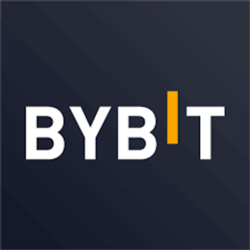Review Author
The Holder.io editorial team has analyzed over 100 cryptocurrency exchanges and is ready to share the results of the research.
A cryptocurrency exchange is a platform for exchanging and purchasing cryptocurrencies. This definition encompasses many different categories—cryptocurrency exchanges vary in terms of centralization, client requirements, and additional trading features.
What Types of Cryptocurrency Exchanges Are There?
Spot Exchanges
Spot cryptocurrency exchanges are more suitable for beginners and novice traders. The feature of spot trading is that settlements for each transaction occur at the same moment it was made.
Spot platforms support two main types of trading orders: market and limit. Market orders are suitable for instant buying or selling at the current market price. Limit orders allow you to set your own price, meaning the order will only close when there is a counter order at the same price.

The market is formed by makers and takers. In short, a maker is someone who creates limit orders, while a taker is someone who closes them by creating a market order. Since the maker plays a key role in forming the market, trading fees for them are usually significantly lower or even zero.
Popular spot cryptocurrency exchanges:
Futures (Options) Exchanges
A derivative is a contract in which one user agrees to transfer cryptocurrency to another within a specified time frame and at a specified price. When trading derivatives, traders do not own the underlying asset itself but earn from changes in its market price and provide risk hedging.

When trading contracts, leverage is often used, which can significantly increase potential earnings, but in the case of an unsuccessful trade, losses can also increase dramatically.
Futures are contracts for the sale/purchase of an asset in the future at an agreed price. Futures can also be perpetual, meaning they can be sold at any time. Options differ from futures in that they do not obligate the trader to buy the specified asset but give them the right to do so.
Examples of futures cryptocurrency exchanges:
Cryptocurrency Exchanges with Margin Trading
Margin trading involves providing the trader with credit for a certain amount secured by the funds they have in their balance. This credit can only be used for trading operations on the same exchange. The credit leverage increases purchasing power and can multiply profits from successful trades. Due to the high risk involved, margin trading in cryptocurrencies is suitable for professionals and is not recommended for beginners.

On some exchanges, it is required to first transfer funds to a separate margin account before utilizing credit.
Credit can be issued either directly from the funds belonging to the exchange or (more often) from the funds of other users, who earn interest by lending their money.
Examples of cryptocurrency exchanges with margin trading:
List of Cryptocurrency Exchanges
1. Binance

- Official website of Binance exchange: https://www.binance.com
- Year established: 2017
- Fees: maker 0.075%, taker 0.1% (may decrease using BNB token)
A leader in spot trading. Binance stands out for its low fee levels and high functionality—there are various types of trading (spot, margin, futures, OTC, p2p), as well as opportunities for passive income—deposits, pools, lending systems. Recently, there has been an option to order a plastic card.
2. Yobit

- Official website of the exchange: https://yobit.net/
- Year established: 2014
- Fees: 0.2% per trade
The Yobit cryptocurrency exchange is registered in Panama and, at the time of writing this review, has over 6000 trading pairs available for trading. The administration of the crypto exchange remains anonymous.
3. Coinbase

- Exchange: https://www.coinbase.com/ru/
- Year established: 2012
- Fees: 0.5% + fixed fees may apply depending on currency
A regulated American crypto exchange + wallet. Initially, it was a specialized service focused on Bitcoin, but now offers full functionality with support for several popular digital and fiat currencies. Coinbase positions itself as a fully transparent platform for authorities, so anyone using it must undergo verification and be prepared for their transactions to be monitored.
4. Binance Futures
- Exchange: https://www.binance.com/ru/futures
- Year established: 2019
- Fees: maker 0.02%, taker 0.04%
A platform launched by the Binance cryptocurrency exchange quickly rose to the top in daily trading volume among futures exchanges. It supports several types of contracts. Any user of the main Binance platform can open an account on this platform without needing to create a separate account. However, to trade, funds must be transferred from the main account to the futures account.
5. Kraken

- Exchange: https://www.kraken.com/
- Year established: 2011
- Fees: maker 0.16%, taker 0.26%
One of the oldest cryptocurrency exchanges still successfully operating today. Founded in the USA, it primarily targets users from either the States or Europe, though Russian language support is also available. The authority of the Kraken platform is confirmed by its trading volumes—the exchange consistently ranks among the leaders in spot trading.
6. EXMO

- Official website of EXMO exchange: https://www.exmo.me/
- Year established: 2013
- Fees: Trading fee 0.2%
The EXMO cryptocurrency exchange is fully adapted to the Russian market. This is because the exchange was founded by Russian entrepreneurs Eduard Anufiev and Ivan Petukhovsky. Users are also attracted by the low level of commission fees.
7. ByBit
- Exchange: https://www.bybit.com/
- Year established: 2018
- Fees: maker -0.025%, taker 0.075%
This relatively new derivatives exchange has quickly gained popularity. Much of this can be attributed to the $10 bonus offered upon registration (though it can only be used for trading). In addition to this bonus, there are others (for the first deposit, for activity on social media, etc.). A demo account is available where users can try their hand at trading without risk.
8. PrimeXBT
- Exchange: https://primexbt.com/
- Year established: 2018
- Fees: 0.05%
PrimeXBT is a multifunctional platform where trading is available for both cryptocurrencies and other trading instruments (forex, commodities, indices). You can work with the exchange without verification; leverage up to 100x (for crypto) is provided. Fiat deposits can be made using a bank card.
9. Poloniex
- Exchange: https://poloniex.com/
- Year established: 2014
- Fees: 0.125%
The Poloniex exchange offers the possibility of spot, derivatives, margin trading, as well as lending (depositing cryptocurrency for interest). Only verified users can work with the platform. A significant selection of trading pairs (over 250) and loyal commissions have maintained substantial trading volumes on the exchange for several years, although they are far from being top-tier.
10. Binance DEX
- Exchange: https://www.binance.org/
- Year established: 2019
- Fees: depend on the currencies and wallets used
Binance DEX is a decentralized cryptocurrency exchange launched by Binance as an option for those who prefer to manage their assets independently. To use it, you need to create a wallet, saving the private key and mnemonic phrase on your device. The platform supports assets operating on the Binance Chain and Binance Smart Chain blockchains.
11. Bitmex
- Exchange: https://www.bitmex.com/
- Year established: 2014
- Fees: maker -0.025%, taker 0.075%
The BitMEX exchange ranks among the most sought-after platforms for trading cryptocurrency derivatives. It offers several different types of contracts; however, all calculations, deposits, and withdrawals are conducted in Bitcoin (here it is denoted as XBT instead of BTC). The platform is quite functional but complex for beginners, so it is recommended to carefully study the accompanying reference information first.
12. Uniswap DEX
- Exchange: https://app.uniswap.org/#/swap
- Year established: 2020
- Fees: 0.3%
Uniswap is an automated market-making exchange operating on the Ethereum blockchain and supporting all assets placed on that same blockchain. It rewards liquidity providers with a share of the fees from operations conducted in each pool. Currently, Uniswap is the most popular decentralized exchange with a trading volume exceeding $300 million daily.
13. DyDx
- Exchange: https://dydx.exchange/
- Year established: 2019
- Fees: maker 0%, taker 0.15%
The decentralized dYdX exchange provides the opportunity not only for trading but also for DeFi lending. This means that if a user does not want to sell their assets, they can simply leave them as collateral and receive others in return for some interest. Interest rates change automatically based on market conditions.
14. Yobit
- Exchange: https://yobit.net/ru/
- Year established: 2014
- Fees: 0.2%
YoBit is one of the most controversial platforms in the industry at present. It has been operating for several years, has its audience, yet is constantly criticized for launching dubious services or issues with fund withdrawals. It supports several hundred trading pairs and regularly adds new ones. There is an opportunity for passive income through VMining or InvestBox.
15. Livecoin
- Exchange: https://www.livecoin.net/ru
- Year established: 2015
- Fees: 0.18%
Livecoin positions itself as the #1 cryptocurrency provider. It allows operation without undergoing KYC/AML, including with fiat, and withdrawing money to cards or electronic wallets. It supports working with vouchers—special codes for instant transfers within the exchange without fees.
16. Currency
- Exchange: https://currency.com/ru
- Year established: 2019
- Fees: maker -0.025%, taker 0.075%
Currency is a Belarusian cryptocurrency and tokenized assets exchange that operates fully within the legal framework and requirements of the High Technology Park of Belarus. It is user-friendly and allows deposits and withdrawals via bank cards. Account verification is required.
17. CEX.IO
- Exchange: https://cex.io/
- Year established: 2013
- Fees: maker 0.16%, taker 0.25%
Cex.io was initially founded as a cloud mining service but later requalified as a trading platform. It allows trading with leverage up to 100x and also offers staking for some popular tokens (XTZ, ATOM, MATIC, etc.).
Comparison of Cryptocurrency Exchange Fees
The priority factor when choosing a cryptocurrency exchange is the fee charged during trading or when depositing/withdrawing money from the account. We present a summary table of fees across cryptocurrency exchanges.
Trading fees (listed without considering possible discounts):
| Exchange | Maker Fee | Taker Fee |
| Binance | 0.075% | 0.1% |
| EXMO | 0.4% | 0.4% |
| Poloniex | 0.125% | 0.125% |
| Coinbase | 0.5% | 0.5% |
Withdrawal fees for cryptocurrencies:
| Exchange | Withdrawal Fee for Cryptocurrency (specified for Bitcoin) |
| Binance | from 0.0000016 to 0.0005 BTC, depending on the type of address |
| EXMO | 0.0004 BTC |
| Poloniex | depends on network congestion |
| Coinbase | depends on network congestion |
Conclusion
After conducting an in-depth analysis of over 100 cryptocurrency exchanges, we at Holder.io have come to several concrete conclusions that may be useful for both newcomers and experienced traders in the world of cryptocurrencies.
- Binance's Leadership: Binance undeniably dominates the field of spot trading. The combination of low fees, a variety of trading tools, and additional opportunities for passive income makes it attractive to a wide range of users.
- Beginners Should Avoid Complex Platforms: Platforms like BitMEX and ByBit, while popular among experienced traders, can be overly complex for beginners due to their high-risk nature and interface complexity.
- Decentralized Exchanges on the Rise: Platforms like Uniswap and dYdX are gaining popularity due to their decentralized nature and innovative approaches to trading and lending.
- Regional Features: EXMO and Currency occupy a special place in the market by offering services tailored to the needs of the Russian and Belarusian markets, respectively.
- The Importance of Transparency and Security: Coinbase, as a regulated American platform, emphasizes the importance of transparency and compliance with legislation, which can be critically important for certain categories of users.
- Controversial Platforms: YoBit, despite its popularity, raises certain concerns due to its controversial reputation, which should serve as a caution signal for traders.
- Fees as a Key Selection Factor: Our comparison shows that fees play a key role in choosing an exchange. Binance, with its low fees, appears preferable compared to higher fees on platforms like EXMO and Coinbase.
In conclusion, the choice of a cryptocurrency exchange should be based on a combination of factors, including fees, security level, functionality and user interface convenience, as well as specific user needs. Our analysis shows that while some platforms are leaders in certain aspects, there is no universal solution that fits everyone without exception.



























